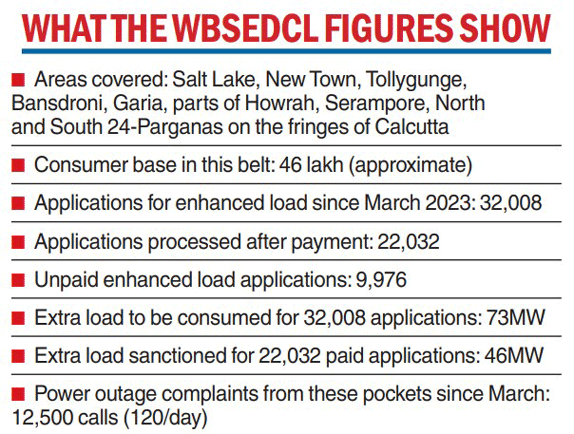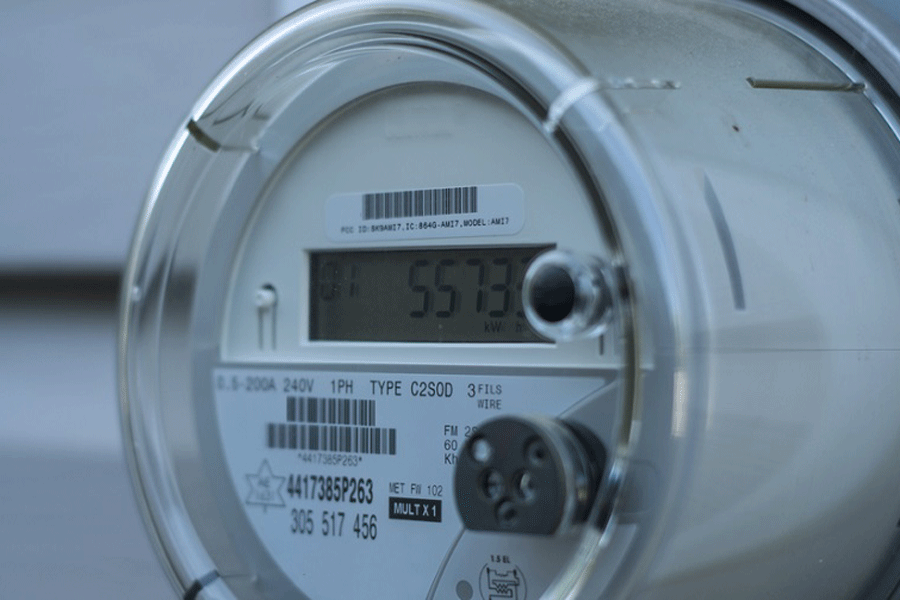The state government’s power utility — West Bengal State Electricity Distribution Company Limited — received 32,008 applications to increase the load capacity of individual meters in Salt Lake, New Town, Tollygunge, Garia and pockets around Kolkata over the past three-and-a-half months.
Of the applicants, 22,032 have made the necessary payments and completed the process. That means officially, at least 10,000 consumers are still using loads beyond their meter’s capacity in this small area, a senior official in the state power department said.
The real figure will be several times higher.
Consumers’ reluctance to upgrade their meters as they keep adding air-conditioners and other gadgets is allegedly the biggest trigger for frequent power cuts this season.
CESC, which serves the city proper and some adjoining areas, has complained of the same problem.
The state government agency, too, cited this as their biggest peeve as the searing heat made ACs a necessity like never before and demand for power soared.
The unsanctioned load trips meters. When there are many such consumers in a small area, the entire supply is snapped, engineers from both agencies said.
The scale of the problem is easy to tell. In the past three-and-a-half months, the state power utility received over 12,500 power cut complaint calls from just the pockets around Kolkata it serves, an official said. This amounts to an average of 120 calls complaining of power outage every day.
State power department minister Aroop Biswas on Tuesday said the state-run utility was facing outages in several pockets because of power consumption beyond the sanctioned load.
Senior officials of the WBSEDCL said they were trying to create awareness in such pockets and had enhanced the cable capacity to prevent power outages in the areas.
“Many consumers claim they are not aware of the rule that they need to increase the sanctioned load if they add high-powered electrical gadgets in their house. Some say that they use two ACs alternatively and hence do not need to sanction load for both,” said a WBSEDCL engineer.
But the rule says that the sanctioned load of a household should be the cumulation of the total wattage consumed by the major power appliances of the house. It is usually calculated according to the number of ACs in the house that have the maximum power consumption.
A WBSEDCL consumer can make an online application for load enhancement, officials said. If the application specifically mentions an AC load, it is fast-tracked. “We try to process the applications for AC loads within three to four days if all formalities are complete,” an official said.
Consumers are supposed to deposit a stipulated amount at the electricity office as per the calculated enhanced load. The payment can be made in a two-month window from the date of application.
However, a senior official said, although a majority of consumers pay at the time of applying, some wait for the entire duration of the two-month window to pay. Some do not pay at all.
“For those who apply for enhanced load, it is apparent that they are aware of the rule and have full knowledge about the need to enhance their meter load for the use of additional appliances. But when the same people delay or do not pay the charges for the enhanced load, it only means they have the intention of using unsanctioned load,” the official said.

